Claiming Home Office Expenses: Post-Financial Year Considerations
As the end of the financial year has just passed, Australian business owners now need to turn their attention to a critical task: claiming home office expenses. With remote work continuing to shape the landscape of modern business, understanding how to navigate the ATO’s guidelines on home office deductions is crucial. In this guide, we explore the two methods recognised by the ATO to calculate your claim and maximise your tax deductions: the Fixed Rate Method and the Actual Cost Method.
Are you eligible to claim?
Before you put in the hard work to claim working from home expenses, you need to find out if you are eligible to make a claim. To be eligible, you must:
- Be working from home to fulfil your employment duties, i.e., not just answering occasional emails and phone calls.
- Incur additional expenses as a result of working from home.
- Keep records that show you incur the expenses.
1. The Fixed Rate Method
The Fixed Rate Method is a straightforward way to calculate your home office expenses. You can claim 67 cents per hour for every hour worked from home, covering additional expenses such as heating, cooling, lighting and internet or data expenses.
Advantages:
- Simplicity. Requires minimal record-keeping—just track your hours worked from home.
- Multiply your total hours worked from home by the applicable rate to determine your deduction.
Considerations:
- Ensure you have accurate records of your hours worked from home to support your claim. A log for the year must be kept of the hours worked.
- A separate system is required to claim expenses not covered by the fixed rate, such as the decline in value of depreciating assets (like home office furniture).
- This method is ideal for those who prefer a simplified approach to claiming home office expenses without the need for detailed expense tracking.
2. The Actual Cost Method
- Alternatively, the Actual Cost Method allows you to claim the actual expenses incurred while working from home. This includes:
- Utilities: Proportion of electricity and gas bills attributable to your home office.
- Internet and Phone: Costs related to work-related use of internet and phone services.
- Depreciation: Decline in value of home office equipment and furniture.
Advantages:
- Precision: Claim expenses based on actual costs incurred, potentially maximising your deduction if your home office expenses exceed the fixed rate.
- Flexibility: Suitable for those with higher-than-average home office expenses or specific equipment depreciation needs.
Considerations:
- Requires detailed record-keeping and documentation of all expenses claimed.
- Keep invoices, receipts, and records that clearly demonstrate the connection between expenses and your work activities.
Consult the experts
In order to ensure that you are maximising your tax return, consult an expert like Ascent Accountants. Our team offers a comprehensive suite of services that go beyond the scope of a traditional accountant role. We provide active partnership in your business journey.
Successfully preparing your home office expense claims post-financial year hinges on careful consideration and adherence to ATO guidelines. By selecting the appropriate method—whether Fixed Rate or Actual Cost—and partnering with seasoned professionals like Ascent Accountants, you ensure your claims are precise, compliant, and optimised for maximum tax benefits. Contact us today to explore how we can assist in achieving your financial objectives and steer your business towards continued growth and success.
Need help with your accounting?








